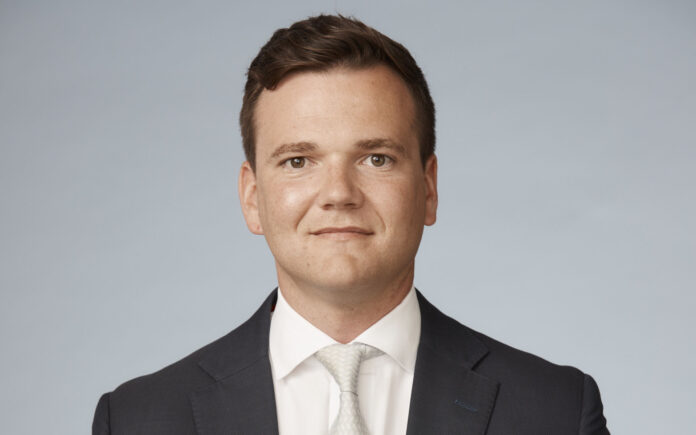Several long-term technological and behavioural trends are shaping the healthcare sector’s shifting investment needs. Mark McArdle, investment director for infrastructure asset manager Morrison & Co, explains them.
Healthcare is front of mind like never before. Emerging from two years of a pandemic-induced lockdown, which strained many health systems to near breaking point, and with populations ageing in all major economies, improving patient outcomes and investing in healthcare infrastructure have risen to the top of the global agenda.
However, healthcare does not come cheap. From pharmaceuticals to the technology needed to develop and build sophisticated diagnostic tools, significant long-term investment is required to maintain the pace of medical research and the available supply of equipment needed to meet patients’ demands. The pandemic clearly demonstrated the correlation between investment and results, with the unprecedented cash injections from national governments resulting in an exceptionally fast and effective vaccine rollout.
As asset managers, it is our job to examine the longer-term trends that will underpin the society of the future. Our objective is to invest capital intelligently, to fund the development and expansion of the necessary infrastructure to meet societal needs, but also to ensure strong and steady returns for investors.
Healthcare may not be the first sector that comes to mind when thinking of infrastructure investment. However, with leaps in technology and the increasing scale of demand, healthcare has become perfectly suited to the long-term nature of infrastructure capital and vice versa. The sector’s need for stable, significant and patient capital fits the asset management investment model well – and, on the flipside, suits healthcare providers who want long-term owners with expertise in the sector. Healthcare assets also have the added benefit of rarely being dented by downturns, as demand for services transcends recessions – making the sector a strong hedge against GDP.
Preventative care
As well as complementary models, there are several long-term technological and behavioural trends shaping the sector’s rapidly shifting investment needs:
- Increasing demand and costs: The way many countries think about healthcare is changing. The benefits of preventative care are being recognised and attracting investment as an effective way of staving off greater costs as chronic illnesses develop. Coupled with an ageing population, there is a significant opportunity to provide the long-term infrastructure that will pre-empt illness and do more of the heavy lifting to support growing patient numbers with complex treatment requirements.
- Increasing technological intensity: Centralised cloud-based patient data sets are not only helping clinical decision-makers, but also delivering in-depth insights to assist treatment. Meanwhile, technological leaps in remote consultation, personalised medicines and wearables are improving how patients are treated and assessed, while reducing the need for in-person visits – thereby relieving some workforce pressures.
- Regulatory uniformity: The alignment of healthcare regulation is making investment increasingly attractive. In the EU, for example, shared views on best practice, common objectives and pooled resources are attractive to infrastructure asset managers that can invest in resources or technologies that can be used across the region. As regulatory alignment deepens across EU states and globally, there is greater incentive for healthcare investment focussed on specific areas that will make the greatest global impact as markets open up.
A combination of these factors and the rapid pace of change make for fertile investment conditions. If we compare where healthcare systems are now to where they were 30 years ago, the difference is stark – treatment was relatively low-tech and in-person GP appointments were the primary means of detecting and exploring illness.
Fast-forward to today, and sensors, imaging technology, wearable tech and remote consulting have become more prevalent as healthcare systems harness the power of technology to better manage time and resource. In another thirty years, we will likely see a deepening reliance on technology, AI and data to make more informed and personalised treatment decisions. This is the infrastructure in which asset managers can make the most difference – from advanced and more frequent testing to personalised and effective treatment options, ultimately driving better health outcomes for patients.
“If we compare where healthcare systems are now to where they were 30 years ago, the difference is stark.”
For nationalised health systems like the UK, private providers backed with much needed private capital, can work in partnership and help governments with many tough choices on how to spend taxpayers’ money during this cost-of-living crisis. These private providers, backed with long-term capital, who adhere to the same values of a national health system and clinical quality regulation, can be a much-needed partner to governments with already strained systems and long patient waitlists. They can also help these health systems to focus on the primary objective – providing citizens timely access to high-quality and affordable healthcare.
Asset managers with long-term investment capital have a vital role to play in upholding this breakneck pace of medical innovation and in supporting the future health of society, all the while securing consistent returns for their investors. The increasing prevalence of infrastructure asset managers in healthcare, led by knowledgeable individuals able to identify emerging trends is vital. As we enter a new era of medical science, with the spectre of inevitable future pandemics and an ageing population weighing on systems already under pressure, asset managers will become essential in shaping the future of healthcare.
© 2022 funds europe





